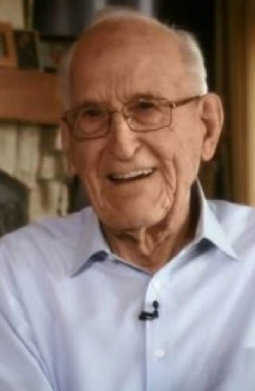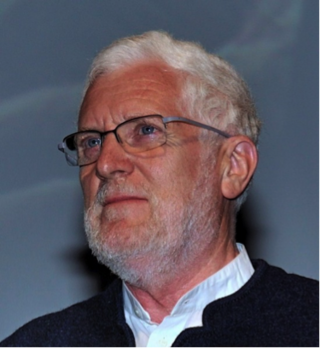
Longevity may refer to especially long-lived members of a population, whereas life expectancy is defined statistically as the average number of years remaining at a given age. For example, a population's life expectancy at birth is the same as the average age at death for all people born in the same year.

The Okinawa diet describes the traditional dietary practices of indigenous people of the Ryukyu Islands, which were claimed to have contributed to their relative longevity over a period of study in the 20th century.

Nicoya is a district and head city of the Nicoya canton, in the Guanacaste province of Costa Rica, located on the Nicoya Peninsula. It is one of the country's most important tourist zones; it serves as a transport hub to Guanacaste's beaches and national parks.
The Okinawa Centenarian Study is a study of the elderly people of Okinawa, Japan. The study, funded by Japan's ministry of health, is the largest of its kind ever carried out. Over the years, the scientists involved have had access to more than 600 Okinawan centenarians.

The Nicoya Peninsula is a peninsula on the Pacific coast of Costa Rica. It is divided into two provinces: Guanacaste Province in the north, and the Puntarenas Province in the south. It is located at 10°N 85.4166667°W. It varies from 19 to 37 miles (60 km) wide and is approximately 75 miles (121 km) long, forming the largest peninsula in the country. It is known for its beaches and is a popular tourist destination.
Loma Linda Broadcasting Network (LLBN) is a non-profit, community and variety television, Christian broadcasting network in Loma Linda, California founded in 1996. Broadcast can be received via GloryStar Satellite Systems - Galaxy 19, Internet video streaming on each website, IPTV services such as Roku and Roku devices, Joozoor TV and many more, and Verizon FiOS and cable/low and high power TV stations in select areas. LLBN English broadcasts on Glorystar channel 105, along with LLBN Arabic on Glorystar channel 405 and LLBN Latino on Glorystar channel 505. It is located in Loma Linda which is known as one of only five blue zones worldwide from the surrounding Seventh-day Adventist community from which it draws for its programs, with values and lifestyle centered on the Seventh-day Adventist Church and from the Loma Linda University and Hospital nearby.
Ellen G. White, one of the co-founders of the Seventh-day Adventist Church, was extremely influential on the church, which considers her a prophet, understood today as an expression of the New Testament spiritual gift of prophecy. She was a voluminous writer and popular speaker on health and temperance. Her teachings are preserved today through over 50,000 manuscript pages of her writings, and the records of others.
A blue zone is a region in the world where people are claimed to have exceptionally long lives beyond the age of 80 due to a lifestyle combining physical activity, low stress, rich social interactions, a local whole-foods diet, and low disease incidence. Examples of blue zones include Okinawa Prefecture, Japan; Nuoro Province, Sardinia, Italy; the Nicoya Peninsula, Costa Rica; and Icaria, Greece. The name "blue zones" derived simply during the original survey by scientists, who "used a blue pen on a map to mark the villages with long-lived population."
Adventist Health Studies (AHS) is a series of long-term medical research projects of Loma Linda University with the intent to measure the link between lifestyle, diet, disease and mortality of Seventh-day Adventists.
Matt Osterman is an American independent filmmaker. He wrote and directed the films Ghost from the Machine, 400 Days, and Hover. He resides in Roseville, Minnesota.
Ikigai is a Japanese concept referring to something that gives a person a sense of purpose, a reason for living.

Loma Linda is a city in San Bernardino County, California, United States, that was incorporated in 1970. The population was 24,791 at the 2020 census, up from 23,261 at the 2010 census. The central area of the city was originally known as Mound City, while its eastern half was originally the unincorporated community of Bryn Mawr.
The AARP/Blue Zones Vitality Project is an initiative aimed at improving well-being that began in January 2009 when the city of Albert Lea, Minnesota, launched the initiative with assistance from the United Health Foundation and led by Dan Buettner, author of "The Blue Zones: Lessons for Living Longer From the People Who've Lived the Longest."
The concept of Hara hachi bun me (腹八分目) or hara hachi bu is the practise of eating until one is about 80% full, a traditional Japanese philosophy to achieve good health and longevity. The elders of Okinawa, are world renowned for their longevity are also featured in a series of books referencing their traditional

Ellsworth Edwin Wareham was an American cardiothoracic surgeon and centenarian from Loma Linda, California who promoted the health benefits of plant-based nutrition.
Human Longevity, Inc. is a San Diego-based venture launched by Craig Venter and Peter Diamandis in 2013. Its goal is to build the world's most comprehensive database on human genotypes and phenotypes, and then subject it to machine learning so that it can help develop new ways to fight diseases associated with aging. The company received US$80 million in investments in its Series A offering in summer 2014 and announced a further $220 million Series B investment offering in April 2016. It has made deals with drug companies Celgene and AstraZeneca to collaborate in its research.
Moais are social support groups that form in order to provide varying support from social, financial, health, or spiritual interests. Moai means "meeting for a common purpose" in Japanese and originated from the social support groups in Okinawa, Japan. The concept of Moais have gained contemporary attention due to the Blue Zone research popularized by Dan Buettner. According to research, Moais are considered one of the leading factors of the longevity of lifespan of the Okinawan people, making the region among the highest concentration of centenarians in the world.

Michel Poulain was originally trained in astrophysics at University of Liège (ULiège). He received a PhD in demography at University of Louvain (UCLouvain). As a demographer, he has specialized in international Migration Statistics and Longevity studies. Currently emeritus professor at UCLouvain, he is also senior researcher at the Estonian Institute for Population Studies at Tallinn University (Estonia). He has been President of the Société Belge de Démographie (1984-1990) and later of the Association Internationale des Démographes de Langue Française (AIDELF), (1988-2000).

The Hunza cuisine also called the Burusho cuisine consists of a series of selective food and drink intake practiced by the Burusho people of northern Pakistan. Alternative medicine and natural health advocates have argued without providing any scientific evidence that the Hunza diet can increase longevity to 120 years. The diet mostly consists of raw food including nuts, fresh vegetables, dry vegetables, mint, fruits and seeds added with yogurt. The cooked meal, daal included with chappati, is included for dinner.

If You're Not in the Obit, Eat Breakfast is a 2017 American documentary film directed by Danny Gold that premiered on May 19, 2017 on HBO.









